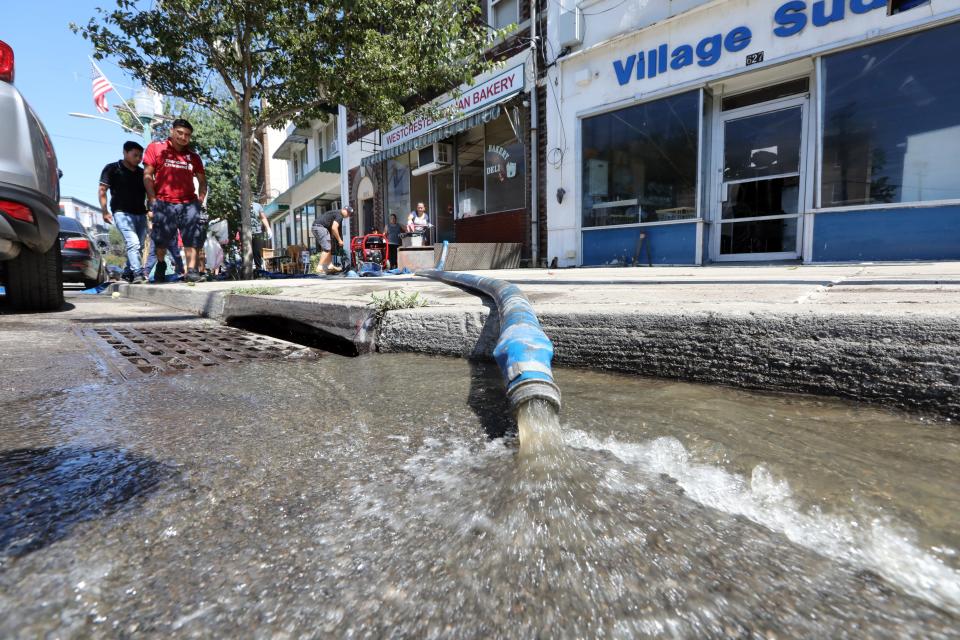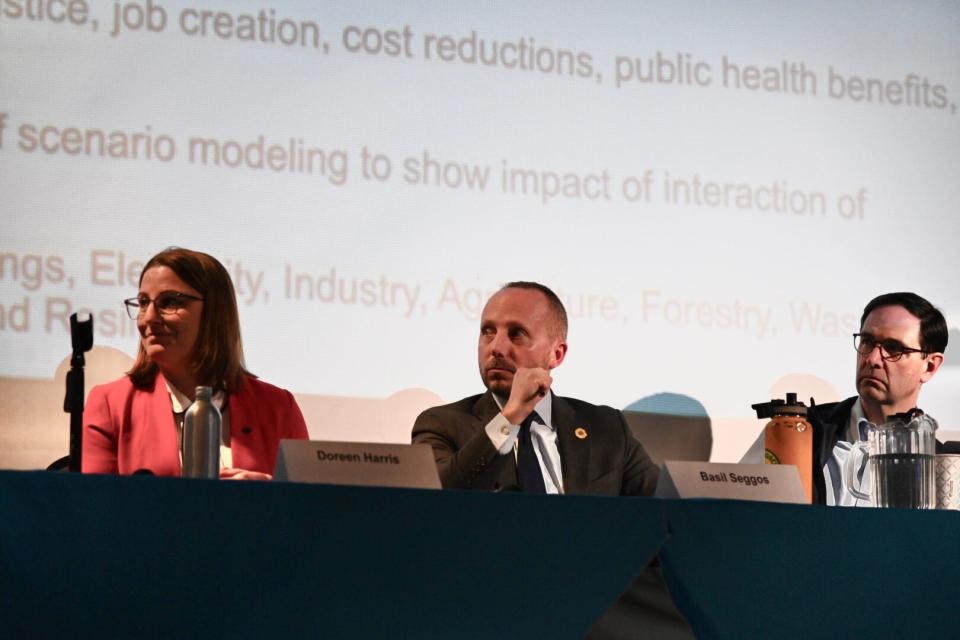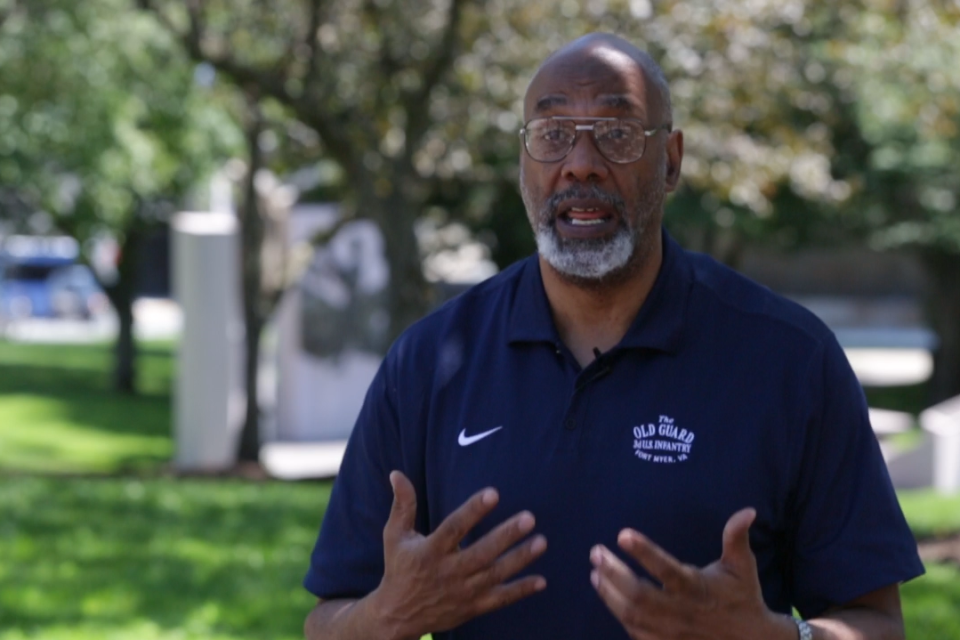New York's $4.2B environmental bond act passes. What to know
New Yorkers on Tuesday approved one of the largest environmental bond acts to address climate change in a quarter-century.
The $4.2 billion Proposition 1 — formally the “Clean Water, Clean Air, and Green Jobs Environmental Bond Act of 2022” — went to voters, who decisively approved further climate and environmental funding. The bond act had 59% support, and less than 29% of voters opposing it, with more than 92% of election districts reporting results as of Wednesday morning.
Leading up to Election Day, the issue of climate change was often overshadowed by issues such as public safety, abortion or government corruption. The bond act wasn't a fiery talking point in this year's election cycle, but it functions as a key piece in New York’s sweeping goals to achieve net-zero emissions by mid-century.
In most of the state, the proposal was on the back of the ballot.

The last environmental bond act passed in 1996. Since then, proponents of the current bond act pointed to increasing extreme weather events worsened by climate change that have devastated the state.
The proposition came a decade after Superstorm Sandy wrought billions in damage, and the remnants of Hurricane Ida in September 2021 also affected downstate with severe flooding.
“The climate is changing,” said Basil Seggos, the commissioner of the New York State Department of Environmental Conservation (DEC), the agency principally tasked with implementing allocations of the bond act. “It is changing the relationship between the built environment and the weather itself. And the status quo is just not working.”

What does the bond act fund?
The proposal breaks down into the following pots of money:
$1.5 billion for climate change mitigation, including no less than $500 million to electrify school buses, and $400 million for green building projects;
$1.1 billion to restoration and flood risk reduction, which includes spending no less than $100 million on coastal rehabilitation and shoreline restoration projects, along with addressing inland flooding;
$650 million toward open space land conservation and recreation, with $300 million for open space land conservation and $150 million for farmland protection;
$650 million for water quality improvement and resilient infrastructure, no less than $200 million of which goes toward wastewater infrastructure projects, and $250 million toward municipal stormwater projects.
The bond act requires the state to make sure at least 35% of funds, with a goal of 40%, go toward communities considered disadvantaged with the effects of pollution and climate change.
The state Comptroller’s Office is now set to issue bonds to create state debt, repaying them over the next 30 years. That could start as early as March 2023, before the end of the fiscal year, a spokesperson for Comptroller Tom DiNapoli said.
Much of the bond act’s requirements will be administered by agencies such as the DEC. It could also open matching funds on certain projects through the federal Inflation Reduction Act, considered the nation's most substantive climate change legislation, that President Joe Biden signed into law in August.
What to know on bailAs bail reform roils NY races, what do we know about how it's working? Here's what the data says
Climate change awaitingWe created scorching 'heat islands' in East Coast cities. Now they're becoming unlivable
Who supported, opposed the bond act?
Former Gov. Andrew Cuomo proposed a version of the environmental bond act, albeit with less funding, but pulled it in 2020 over concerns of funding during the COVID-19 pandemic.
In April, Gov. Kathy Hochul and lawmakers worked to add another $1 billion to the bond act, putting it on the ballot in 2022.
It’s been endorsed by several environmental organizations and labor groups on the grounds that it will address climate change and create jobs.

Aaron Mair, the wilderness campaign director of the environmental nonprofit Adirondack Council and a former president of the Sierra Club, pointed to funds under the bond act, ranging from fixing contaminated water systems to addressing energy efficiency. With climate change, it goes beyond partisan politics, he said.
“One would hope that we can come together on things that save Americans, save lives, and more importantly, save the planet,” he said. “This is no time for climate denialism."
The New York State Conservative Party opposed the proposal because it would add to state debt.
“We fear that New York State’s reputation for unchecked spending will result in the possibility of the state Legislature spending the entirety of the $4.2 billion on projects that should be paid with existing authorized debt, new federal sources and pay as you go where possible,” said Gerrard Kassar, chair of the state Conservative Party, in a statement.
State Comptroller Tom DiNapoli, a Democrat who won reelection Tuesday, supported the bond act. His Republican opponent, Paul Rodriguez, opposed it, as he said in an Oct. 19 Spectrum News debate.
In the wake of IdaWestchester's new flood history disclosure law is in effect. What to know
How has NY handled environmental bond acts in the past?
New Yorkers have passed close to a dozen environmental bond acts throughout the 20th and 21st centuries, said Laura Rabinow, the deputy director of research at the Rockefeller Institute of Government, a nonpartisan think-tank affiliated with the State University of New York system.
Since 1910, voters have objected to only one of 11 bond acts, in 1990, by a narrow margin, Rabinow said. In over 100 years, the acts have reflected priorities undertaken by environmental movements – from conservationism by John Muir in the early 20th century, to water quality and pollution in the 1960s.
The current bond act has a significant portion of funding directed toward climate change.
This may prove important as the state works to meet goals set out in the 2019 Climate Leadership and Community Protection Act, considered one of the most sweeping pieces of legislation in the U.S. to address climate change. By 2050, New York must reduce emissions by 85% compared to 1990 levels.
The climate law didn’t include funds to meet targets in achieving net-zero emissions, Rabinow said. The bond act will help underwrite some of those.
“Those goals, when they were passed, didn’t come with specific appropriations,” she said. While New York’s previous bond acts reflected environmental movements at the time, she added, “this one really reflects the kind of public conversation around climate change, and in broader terms, that we address them as a society.”

What’s also new in the proposal are commitments to communities traditionally left out of environmental activism, said Ana Baptista, an associate professor at The New School and a member of New York City Panel on Climate Change. Often, those most affected are lower income and communities of color.
“Historically, a lot of conservation and green space funding has disproportionately gone to areas of the state that maybe are more well off,” Baptista said.
The bond act, she said, “is important in staking out and prioritizing environmental justice communities for investments in a really explicit way.”
Eduardo Cuevas covers race and justice for the USA TODAY Network of New York. He can be reached at EMCuevas1@gannett.com and followed on Twitter @eduardomcuevas.
This article originally appeared on New York State Team: New Yorkers approve $4.2B environmental bond act proposal

